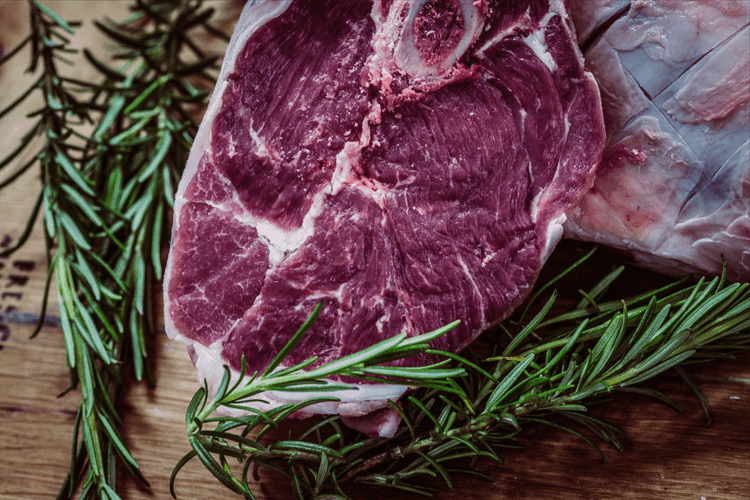Americans don’t consume many cuts of lamb meat; most is consumed around Easter, so you don’t see much selection in your local supermarket. Most supermarkets have just a few of my favorite cuts of lamb, chops, and leg. ( Also see From Garden to Table: The Gordon Ramsay Guide to Cooking with Fresh Herbs)
You may need to ask the meat manager at your local supermarket to special-order your favorite lamb cut if it isn’t available in the meat case. Even though nearly all of the beef and pork purchased in supermarkets across America are bred domestically, you can buy imported and domestic lamb. (Also see From Belly to Chop: The Ultimate Guide to Pork Cuts for the Modern Chef)
How to Choose The Best Cut of lamb
When choosing the best cut of lamb, there are several factors to consider. First, consider the cooking method you plan to use, as different cuts are better suited to certain cooking techniques. It would be best to consider the level of tenderness and flavor you prefer and the amount of fat you are comfortable with.
Some popular cuts of lamb include the leg, loin, and shoulder, each with its unique characteristics and best uses. By understanding the different cuts of lamb and your preferences, you can select the best cut for your meal and enjoy a delicious and satisfying dish.
Imported lamb comes from lambs fed a mixed variety of pasture grasses. On the other hand, in the United States, the lambs initially consume grass, and they later switch to corn/grain. Changing the diet of the lambs to grain directly affects the composition of the fat in the lamb.
This is because the concentration of the fatty acid chains, which are branched and medium length, will reduce in the grain-fed lambs. These fatty acid chains are responsible for the character “lamb” flavor, making the meat tasty.
Identify Primary Cuts of Lamb to Buy for Roasting and Chops
As a home cook who loves to prepare the lamb, I’ve learned that choosing the right cuts of lamb can make all the difference in the final dish. Here are some lamb cuts to look for when buying lamb for roasting or chops:
- Leg: The leg of lamb is a classic cut perfect for roasting. It’s a larger cut, making it great for feeding a crowd, and it can be seasoned with various herbs and spices to create a flavorful and tender end product.
- Rack: The lamb rack is a smaller cut perfect for roasting or grilling. It’s a tender, flavorful cut often served as a special occasion dish.
- Loin: The lamb loin is a lean cut perfect for quick-cooking methods, such as grilling or pan-frying. It’s a tender and flavorful cut often used for lamb chops.
- Chops: Lamb chops are a popular cut that can be prepared in various ways, such as grilling, pan-frying, or broiling. They are typically cut from the rib, loin, or shoulder and can be seasoned with various herbs and spices to create a flavorful and tender end product.
Whether preparing a special occasion dish or a quick and easy meal, a lamb cut is perfect for your needs. You can choose the right cut for your preferred cooking method and end product by understanding the available lamb cuts. These six below are my favorite cuts I often cook in my kitchen.
Rack Of Lamb
The lamb rack is comparable to prime rib on beef; this primal cut is delicious and tender. Even though you can roast this primal cut in the oven, searing the outside in a skillet with a stovetop, cooking it on an outdoor grill is much simpler.
Don’t cook it too long, so you don’t overcook, or it will turn out tough and dry; it is best eaten when prepared to medium-rare in the middle. The first roast typically comprises 8 or 9 ribs and will serve 2 to 4 people.
Lamb Rib Chop
The rib chop is the rack of lamb divided into individual chops and is the best lamb chop available; it is also the most expensive part. The meat is derived from a single muscle that has patches of fat. The exterior fat can be trimmed to cook the meat indoors. But rib chops taste best when grilled (see ‘Grilled Double Bone-In Pork Chop ‘). These chops should be served medium rare or rare and not overcooked.
Lamb Loin Chop
This chop has the bone in the center and meat on each side, making it look similar to a small T-bone steak. Since the bone is protruding, it can be difficult to sear the chops in a pan; they should be ideally grilled. The loin chops should not face the heat to avoid overcooking the small meat piece.
Boneless Leg of Lamb or B.R.T.
Since a lamb leg is big and difficult to cook, I usually purchase a boneless one. The leg is a single piece whose thickness will vary along its length. The thicker part of the leg can be grilled to provide meat that is medium-rare or rare. The leg can also be tied, rolled, and stuffed.
The lamb leg can be classified into the ankle or shank at the bottom end, the loin half or the shank end, and the part near the hip, including the hip, sirloin meat, and butt end. I prefer the shank end for cooking since it has more meat and is easier to cook.
Secondary Cuts of Lamb
Secondary cuts of lamb come from areas of the lamb that are not as commonly used or as popular as the primary cuts. These cuts are less expensive than the primary cuts but can be as flavorful when prepared correctly.
Some examples of secondary cuts of lamb include:
- Lamb shanks: These are the lower part of the leg and are often used in stews or braised dishes.
- Lamb neck: This is a flavorful but less tender cut of meat that can be braised, stewed, or slow-cooked to bring out its full flavor.
- Lamb breast: This is a fatty cut of meat that can be slow-cooked, roasted, or braised.
- Lamb shoulder: This is flavorful but the tougher cut of meat that is often slow-cooked or braised.
When preparing secondary cuts of lamb, it’s important to use the proper cooking method to ensure the meat is tender and flavorful. Slow-cooking or braising are often the best methods for these cuts, as they allow the meat to cook slowly and break down the connective tissue, resulting in a more tender finished product.
Overall, secondary cuts of lamb are a great option for those looking for a more affordable cut of meat with great flavor. With the right cooking method, these cuts can be just as delicious as the more expensive primary cuts.
Lamb Shoulder Chop
Many people do not use lamb chops, thinking that they are expensive. While the loin and lamb rib chops are comparatively expensive, priced at approximately $11 and $14 per lb, they are also comparatively lean and should be cooked rare. On the other hand, the shoulder chops, which cost about $6 per pound, are good for the money.
They should be simmered at low heat so that the connective tissue will break down. This makes the chops tender, moist, and full of flavor. The bones can be added to the stews to make them meatier and add body.
Some marketplaces sell rectangular-shaped blade shoulder chops, which have more fat, while others sell round bone chops, which end with a cross-section of the arm bone and are oval-shaped. My recipes use either of these shoulder chops.
Whole Leg of Lamb
Though smaller legs are available from younger and imported lambs in the marketplace, a whole lamb leg usually weighs between 6 to 10 pounds. To make carving the leg easier, it is advisable to request the butcher to remove the aitch bone and hip bone.
I find cooking a leg of lamb without bones easier, and smaller boneless meat cuts are available. These cuts are more suitable for serving at holiday gatherings and dinner parties, which only a few attend.
Last Updated on June 20, 2023 by John Siracusa



